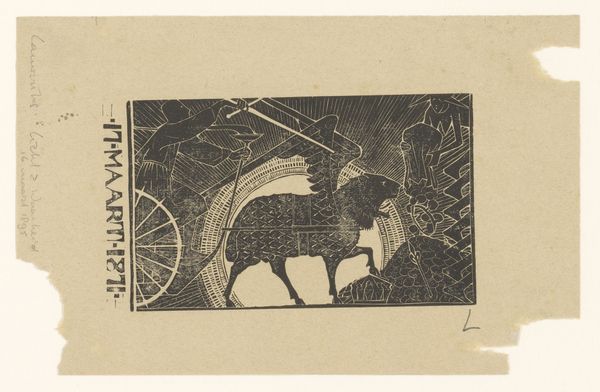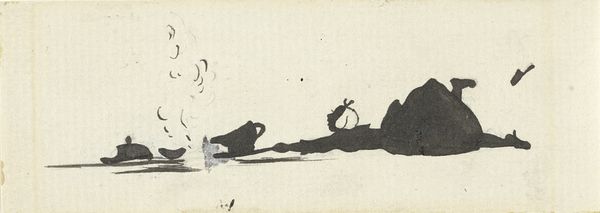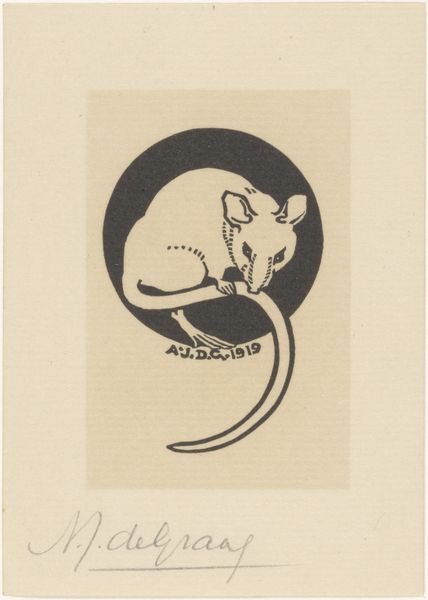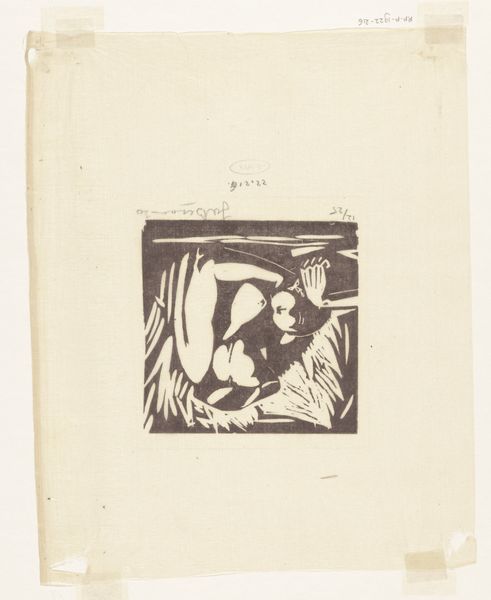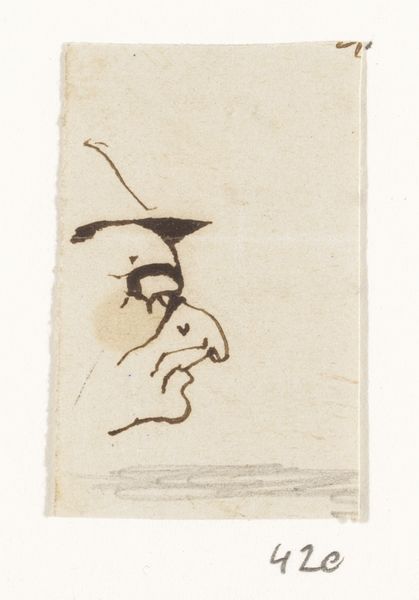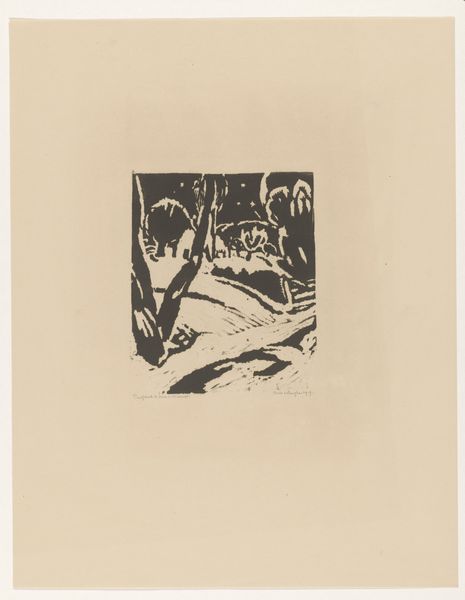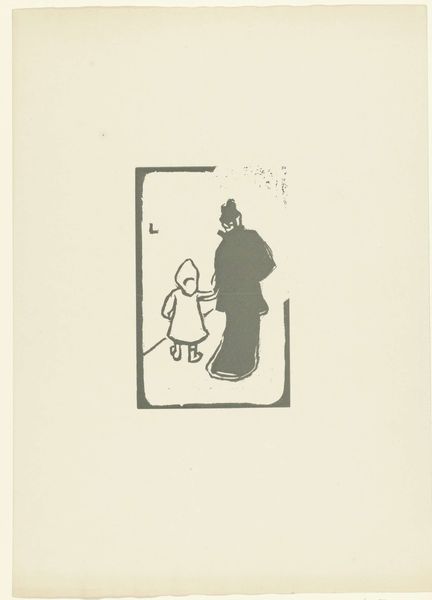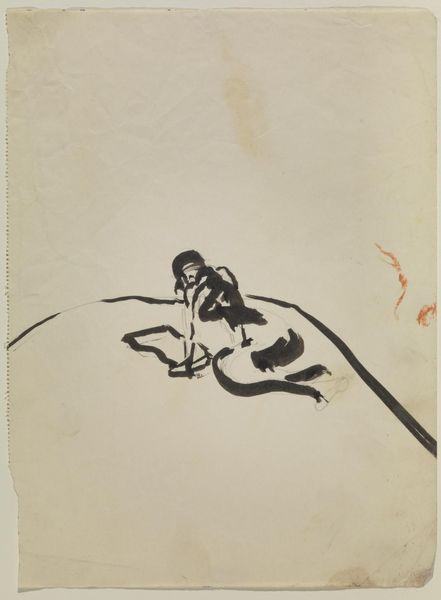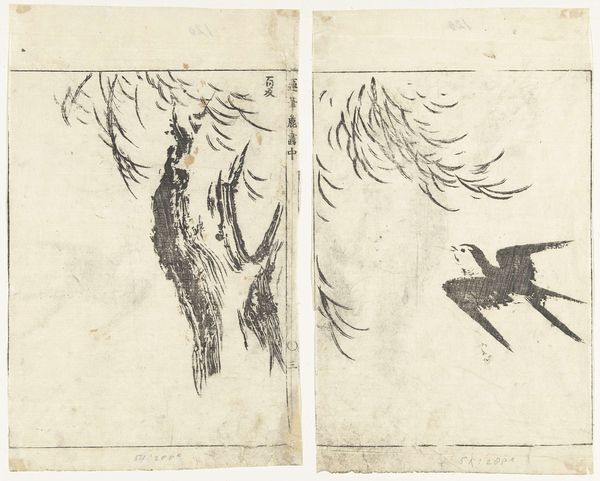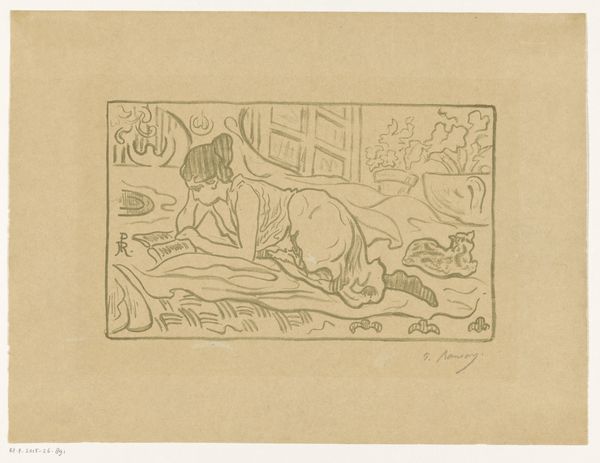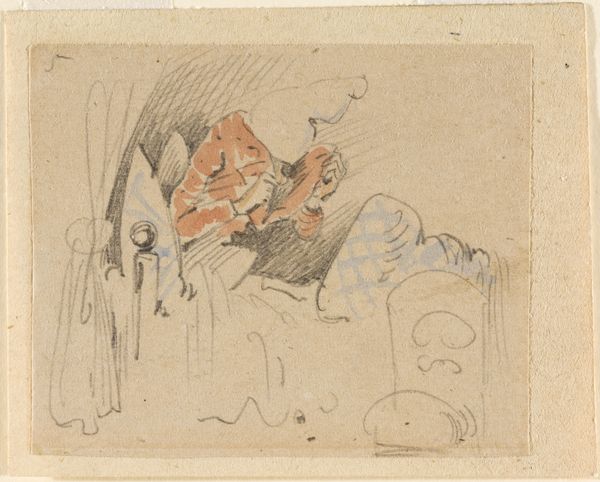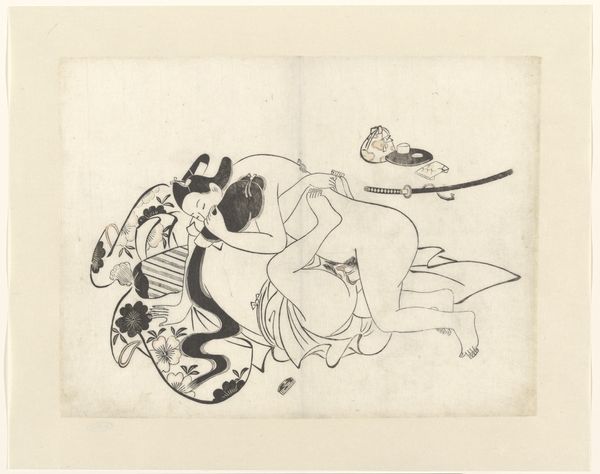
Dimensions: height 42 mm, width 34 mm, height 29 mm, width 84 mm
Copyright: Rijks Museum: Open Domain
Curator: Here we have "Compositie met drie Japanse motieven," or "Composition with Three Japanese Motives," a woodcut print attributed to Henri-Charles Guérard and thought to date between 1856 and 1897. It resides here at the Rijksmuseum. Editor: Immediately, the muted tones and stark contrasts give the piece a serene yet almost melancholic quality. There’s an interesting fragmentation, almost a collage of scenes within the frame. Curator: Indeed. The print reflects the surge of Japonisme that influenced European art during that period, marking a fascination with Japanese art and design. Prints, like this one, played a pivotal role in circulating those aesthetics. Editor: It’s more than aesthetic appropriation, though, isn’t it? The arrangement of three distinct scenes - a figure gazing upwards, another with bamboo, and then a seated woman with a fan, evoke feelings of solitude, while the influence also embodies colonial dynamics of desire, trade, and consumption during the period. Curator: Yes, one must acknowledge that art never exists in a vacuum. The late 19th century saw intensifying interactions, and unequal power dynamics between the West and East Asia. Here, we see an instance of cross-cultural exchange that complicates the very notions of originality and authenticity, challenging how cultural value is assigned across geo-political contexts. Editor: Exactly, and this "Composition" makes visible the Western gaze directed towards the East. While the artist draws inspiration, it begs the question – how does this admiration affect the narrative representations? It underscores a tension between appreciation and exoticism. Curator: Considering its physical creation, Guérard's likely familiarity with the techniques reflects the gradual adoption of printmaking practices throughout European studios. Prints enabled a broader engagement with art and offered greater artistic freedom compared to, say, academic painting. Editor: Precisely. It speaks to a burgeoning visual culture that intersected class, accessibility and identity construction. Looking at the details of Japanese imagery, within a Western print context, urges conversations of cultural identity, representation, and historical context, while appreciating Guérard’s technical print handling. Curator: A nuanced piece indeed, that offers more than a purely visual encounter. Editor: Absolutely. The work compels viewers to ponder questions of cultural exchange, representation, and historical context—issues deeply ingrained in the artwork’s identity.
Comments
No comments
Be the first to comment and join the conversation on the ultimate creative platform.
